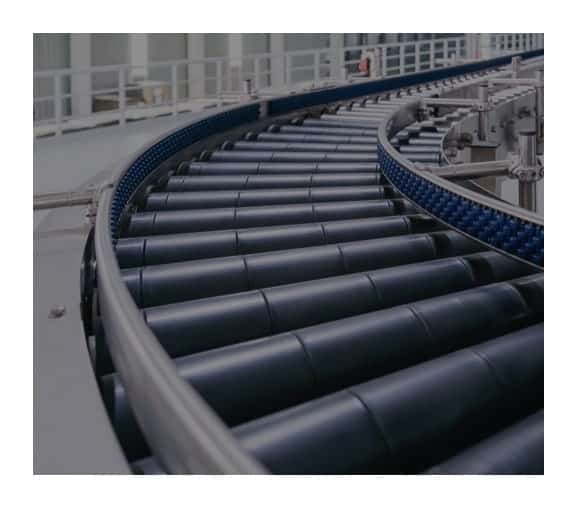
Power Conveyor

There are two basic groups of conveyors: those that rely on gravity to move product and conveyors having a power source. Powered conveyors use some manner of power source to move products along the conveyor line. The most common power source is an electric motor.


